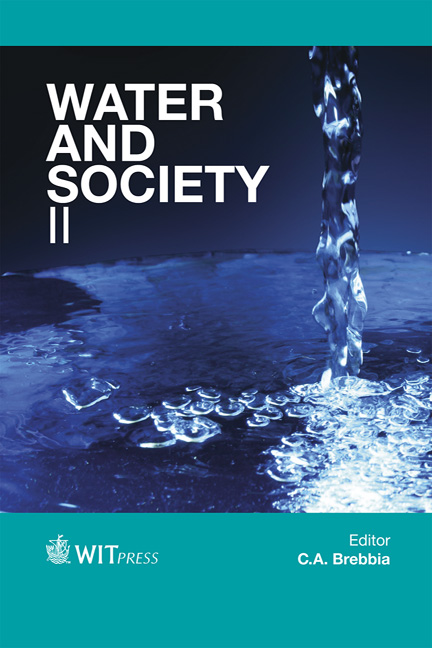The Impact Of Sana’a Solid Waste On The Quality Of Groundwater In Yemen
Price
Free (open access)
Transaction
Volume
178
Pages
13
Page Range
171 - 183
Published
2013
Size
639 kb
Paper DOI
10.2495/WS130151
Copyright
WIT Press
Author(s)
A. Alemad, M. Nagi, A. Ibeda, R. Naser, Y. Alwathaf, O. Elrhaouat, K. Elkharrim, A. Babaqi & D. Belghyti
Abstract
The main objective of this research is to study the quality of water in terms of a physico-chemical analysis of groundwater and the impact of solid waste on the quality of drinking water for residents of the study area, Sana’a Basin. The present investigation was carried out to analyze water samples from Sana’a Basin during the winter season of 2010. Parameters such as pH, conductivity, TDS, alkalinity, sodium, potassium, calcium, magnesium, nitrate, sulfates, phosphates and chloride as well as heavy metals such as Cd, Cr, Cu, Zn, Fe, F, Pb, Ni, Mn, and Zn have been studied. The physico-chemical analysis showed that the selected major ions of the analyzed samples were within the limits of the World Health Organization (WHO) Guidelines and Yemen Standard. The analysis showed that there is a sort of groundwater pollution with some of the selected trace elements. It was found that three samples out of twelve were polluted with chromium; two were polluted with fluoride, two with iron and three with nickel. It was found also that lead in eight samples out of twelve have either slightly higher concentrations than the WHO Guidelines or the permissible maximum level of it. However, on the other hand, according to Yemen Standards limits, Pb concentrations in all samples were within the limits. We can conclude that the groundwater of this region is unsuitable for drinking or human use because of increases in heavy metals according to the WHO Guidelines and the standard specifications of Yemen. Keywords: groundwater, quality, physico-chemical, Al-Azraqin, Sana’a, Yemen.
Keywords
groundwater, quality, physico-chemical, Al-Azraqin, Sana’a, Yemen





